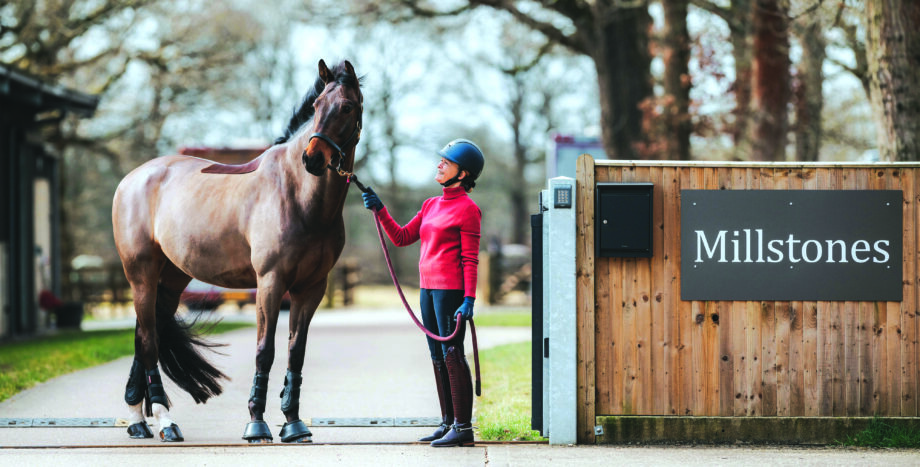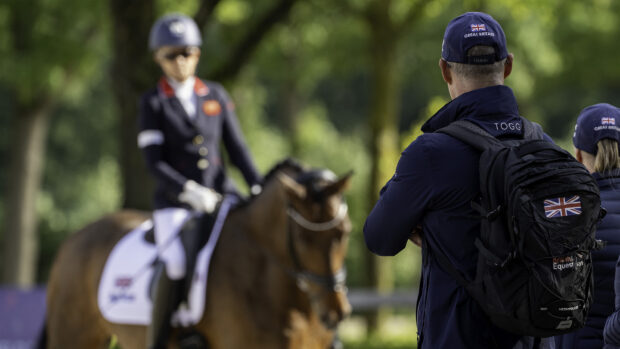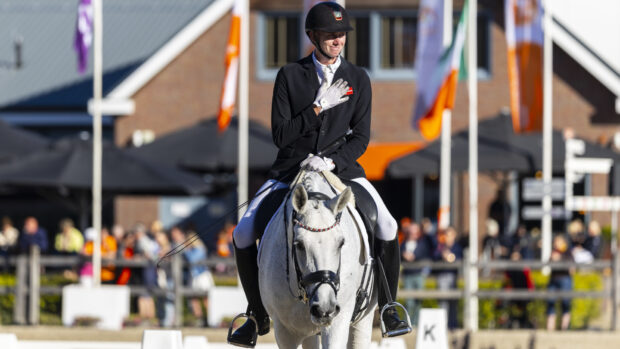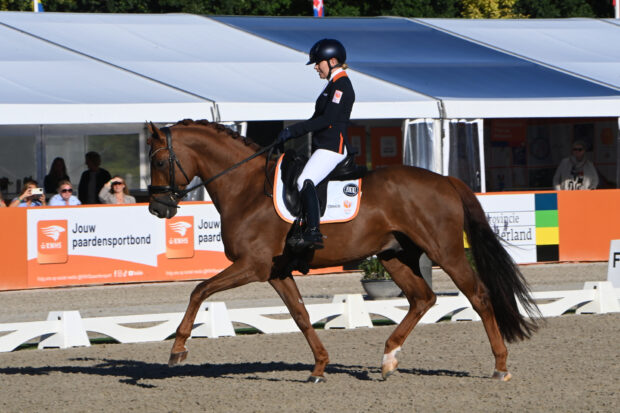When Nicola Naylor lost her sight, she could think of no reason to live.
Having been partially sighted since childhood, Nicola had showjumped on ponies, but this proved more challenging on horses. At 18, she thought a career in the equestrian world was not going to be possible, so went to university. And in her third year, the sight she did have failed.
“I was suicidal,” she says. “I couldn’t see any point in anything.
“But my life rebuilt, in so many ways. And now I can look back and say I’ve had the most wonderful time, especially in the last 15 years with horses coming back into my world, which I would never have had if I’d put an end to things at that point. I’m very grateful now for every day.”
It took years of rehab, as Nicola “sorted my life out”. She got a non-equestrian job, with no thought of horses or riding again. Then when her daughter started having lessons, Nicola went along too.
“That was great fun,” she says. “We were living in London and didn’t know anyone in the area so started from scratch and went looking for a 12.2hh. We got really lucky and found the most amazing pony, and it was my daughter’s trainer, who knew my background, who said: ‘Why don’t you get back on?’
“That sort of lit the candle. I’d had very serious back surgery and never thought I would get back on – but I did. Riding again was a wonderful feeling.”
Nicola knew nothing about dressage at that point but she did know that if she was going to ride, she wanted to compete.
“That was the start of the journey,” she says. “I always knew I wanted to be the best I could be.”
European Championships beckon for Nicola Naylor
Now, she’s earnt her first championship call-up for the 2025 British para team, on Humberto L, and will be heading to Ermelo for the European Para Dressage Championships in September.
“I really enjoyed the dressage and I’ve always had dual goals; realistically, I won’t go to a championship in a non-disabled sport as being blind makes a big difference,” she says. “But I’d love to go to a championship, that’s why I do para dressage too. I’ve been reserve for the Europeans, worlds and Olympics so it will be really nice to stop being reserve!
“That’s a very strong goal, but my other goal is to compete in what’s possible in non-disabled dressage, and certainly train at the highest level. And that’s grand prix.”
Competing, even training, at this level is beyond the reach of almost everyone. But Nicola and her own Del Piero V made a successful grand prix debut in January, aged 63, scoring plus-62%. They have since completed two more tests at this level, increasing their scores, and coming second both times.
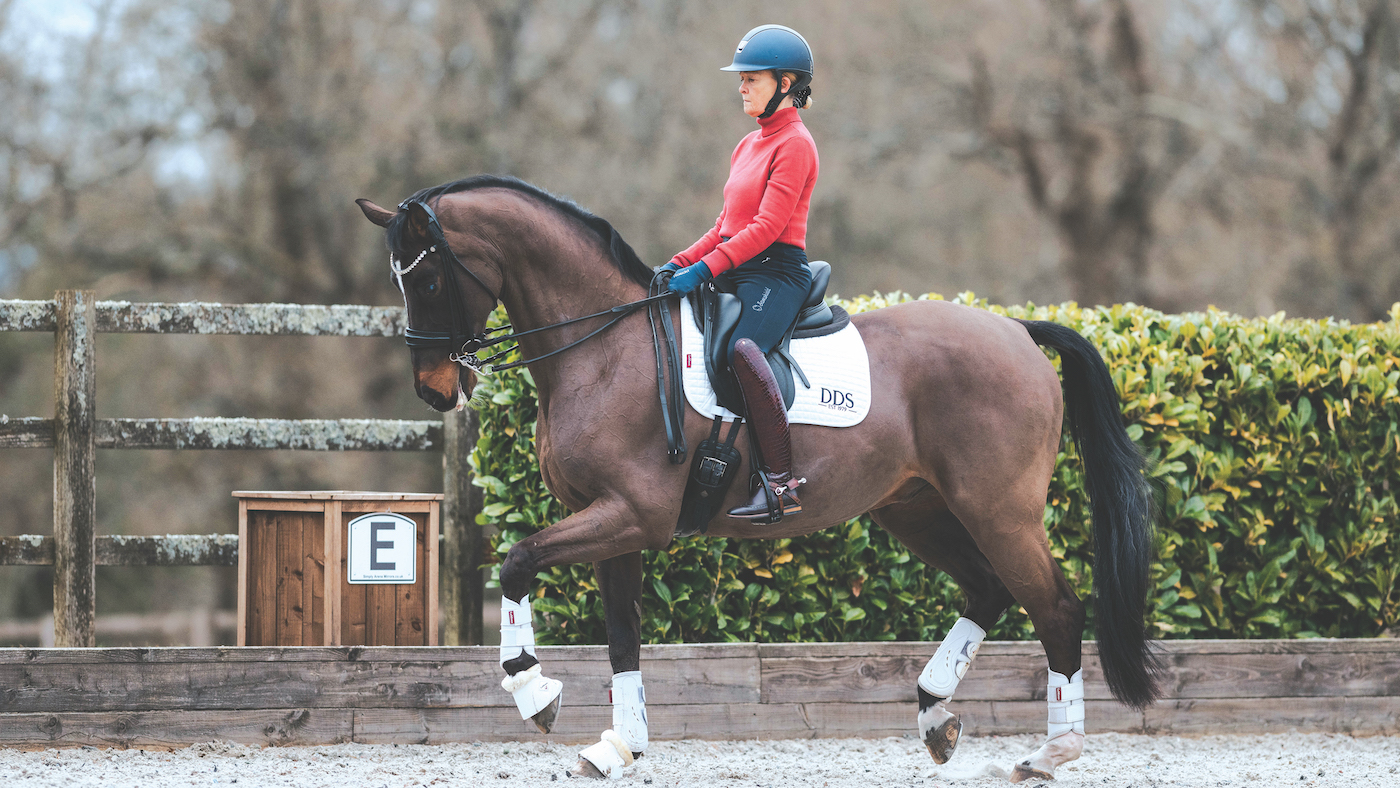
Nicola Naylor and Del Piero V, with whom she made her grand prix debut at the start of 2025. Credit: Tilly Berendt Media
“I probably won’t be on a non-disabled international squad but getting a good score at grand prix, even at regional level, is an achievement – and it makes me a better rider,” she says.
“It’s not just to say I’ve done grand prix, or getting on a horse and riding at that level, but working my way up at each level, which I’ve done. I really enjoy the process, and it’s wonderful to go out and do it.”
How Nicola Naylor solves her challenges
Nicola thinks the challenges people imagine she faces in her riding may not be the hardest to overcome.
“My trainer, Sarah Millis, had never trained anyone who’s blind before, and I hadn’t been blind!” she says. “So how would either of us know? It’s been years of hard work and practice to claw my way up, and we’re only at the beginning of the journey.”
Nicola’s first challenge is that she has never seen dressage; she doesn’t know what a canter pirouette or piaffe-passage looks like. She can’t watch videos, or herself and her horse in a mirror.
“It’s quite difficult to know what a movement should look like,” she says. “And in some ways, my trainer, Sarah Millis, trains me like anyone else, but you can’t get away from the fact it’s different because I’m blind.
“So we’ve found different ways of doing things, and it’s been a journey for me and for her. No one else has done this before, and no one has trained anyone to do it before, so everything is trial and error, and thinking of ways to approach things.”
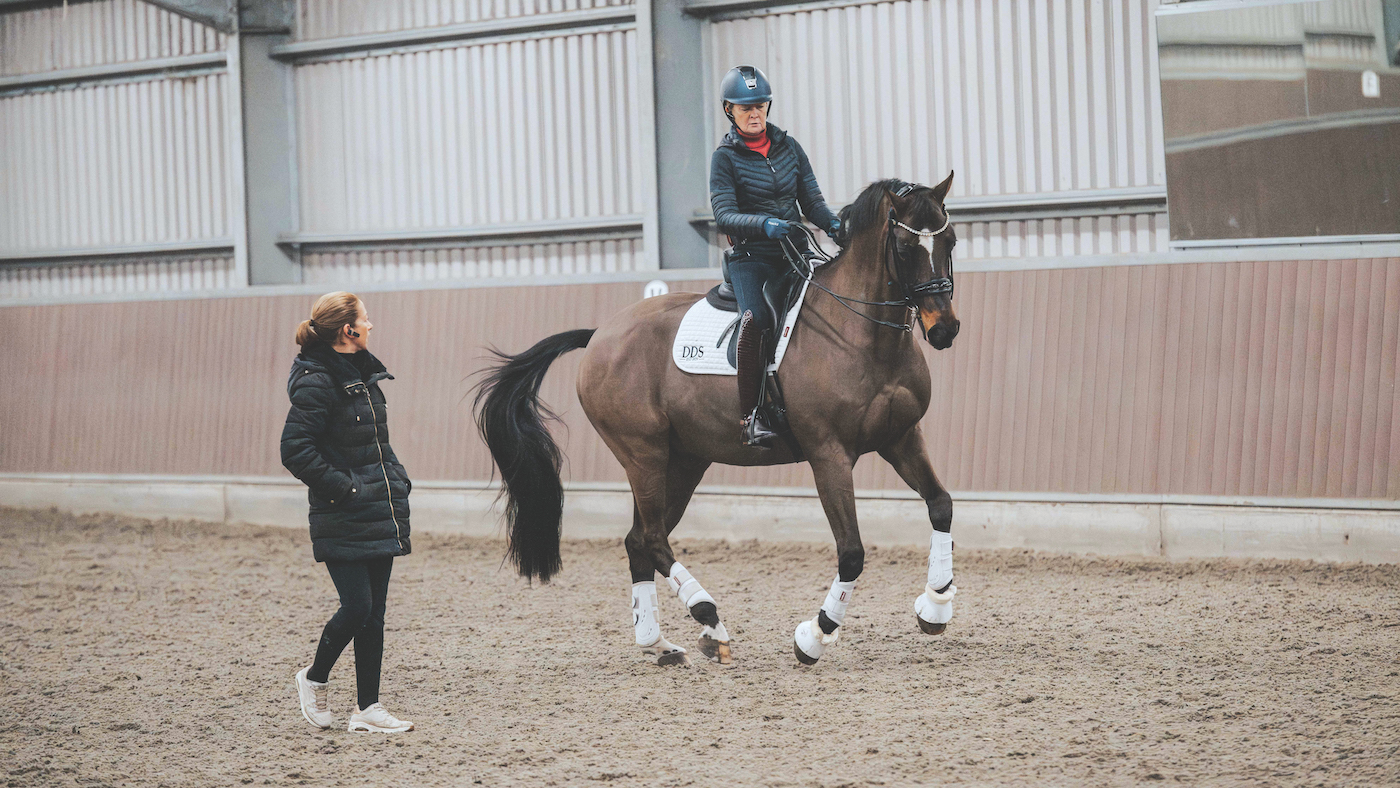
“You can’t get away from the fact that it’s different because I’m blind”: Nicola Naylor, aboard Del Piero V, training with Sarah Millis. Credit: Tilly Berendt Media
Some of the biggest challenges have been with the grand prix work; staying on the correct line with no visual cues, while carrying out a complicated movement, is very hard.
“For any blind rider, the hardest thing is going down the centre line and staying on it,” she says. “And staying on a diagonal line, and arriving at the right place at the other end.”
Nicola is allowed a caller in all tests; for grand prix, Sarah will stand at X and her voice provides a reference point. But once Nicola passes her on a line, it becomes harder for her to know where she is.
“That’s hard enough on a centre line but in the grand prix, suddenly you’re doing canter pirouettes on that line, and tempi changes on the diagonal!” Nicola says.
“It took me ages to learn the tempi changes, probably longer than most as the key to them is being straight. Achieving straightness when you don’t know what you’re aiming for to keep straight, and the changes move the horse slightly, is difficult. And when you’re doing canter pirouettes, how do you know when to stop? Those are the problems I’m still struggling with.”
Nicola finds it easier to know where she is in relation to the outside of the arena, as she can judge the distance from the caller. But the caller is only allowed to call letters, which she will do as Nicola approaches them, and then again when she has to turn, not correct her if she is drifting.
“What I find easiest, and get highest marks for, is the piaffe-passage,” she adds. “They’re on lines it’s easier to orientate myself on.”
Circles are tricky too, but Nicola has the feel of a 10m or 20m shape, and uses the caller’s voice to know how far away she is. She can also detect from urgency in the caller’s tone that she may be drifting off her line.
“It’s just relentless practice,” she adds. “Not all on the same horse, but practising and practising the lines till they become almost a sixth sense.
“What’s interesting is that at home, I can ride a perfect line of changes, with no stirrups! But put me in an arena I don’t know and I feel disorientated, and it’s harder to find my way. That’s when the practice pays off, and gives me the confidence to ride the line and reassure myself I can do it.”
Arena familiarisation at shows is a necessity rather than a luxury, as this allows Nicola to get a feel for her space, and know if the footing is riding faster, for example, which could mean the ends of her lines come up sooner.
There are the other challenges, such as the fact that in the grand prix, the caller has to move about to avoid impeding the judges’ view – and Nicola then finds it harder to know where she is.
“It’s taken 15 years to get here, and I think I should be grateful I’ve managed it,” she says.
“I was completely shell-shocked”
Nicola has ridden her way up the ladder on different horses; she started competing Del Piero at advanced medium, six years ago. She has competed him in para international classes, and won, but pulled him out of para championship selection in favour of Humberto L, with whom she was reserve for Paris last year, as she felt he would go to grand prix.
And he did. Nicola says she was “completely shell-shocked” when she achieved that goal.
“I don’t think the penny dropped the day of the show,” she says. “It wasn’t, ‘Let’s celebrate, I’ve done my first grand prix.’ It was ‘That’s amazing, I’ve done it – and now I need to go and do it a bit better!’ You just have to keep going, don’t you?
“For every door that closes, another one opens, and I’m grateful every day to be lucky enough to have experienced that. And if I’d never got to grand prix, or if I never got on a para championship team, I wouldn’t collapse, because I’ve had such a fantastic time trying to get there.”
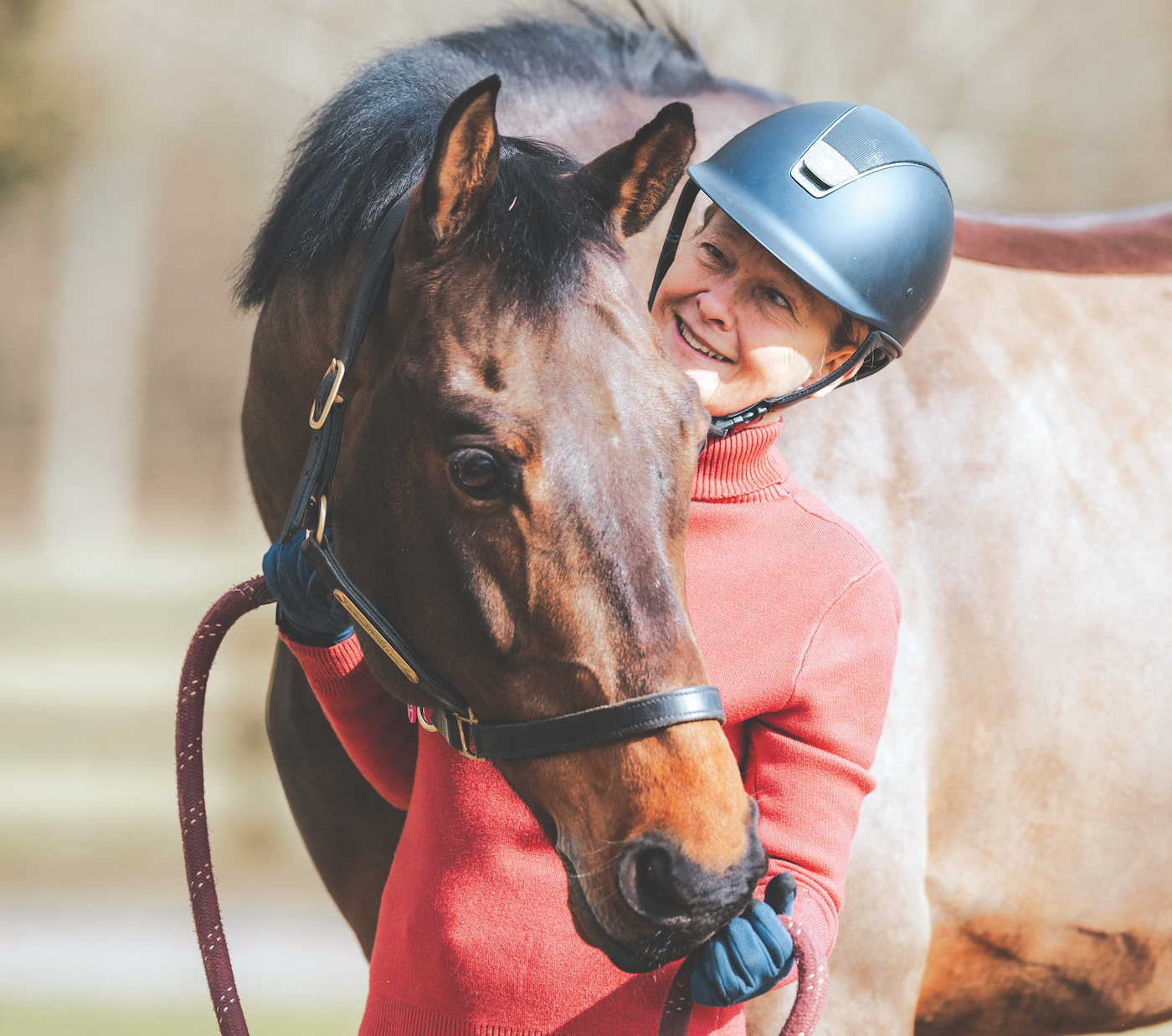
“I’m grateful every day,” says Nicola, pictured with Humberto L. Credit: Tilly Berendt Media
Nicola Naylor’s trainer’s view
Trainer Sarah Millis says Nicola is “amazing” to work with.
“Her dedication and feel – and her, herself,” she adds. “It’s just finding different ways of explaining things sometimes; because she can’t watch a video or look in a mirror. She had an amazing 10 years training with Dan Watson, and when she first came here I was a bit apprehensive. Was I going to be able to do a good enough job? But from the start, we’ve worked together.”
Sarah has had to learn how Nicola works, and work with that as well as making new suggestions.
“Yes, she can’t see, and that makes a big difference, but she’s amazing,” she says. “She rides round the fields and with other people. Warm-ups can be interesting, but they can be even when everyone can see where they’re going!”
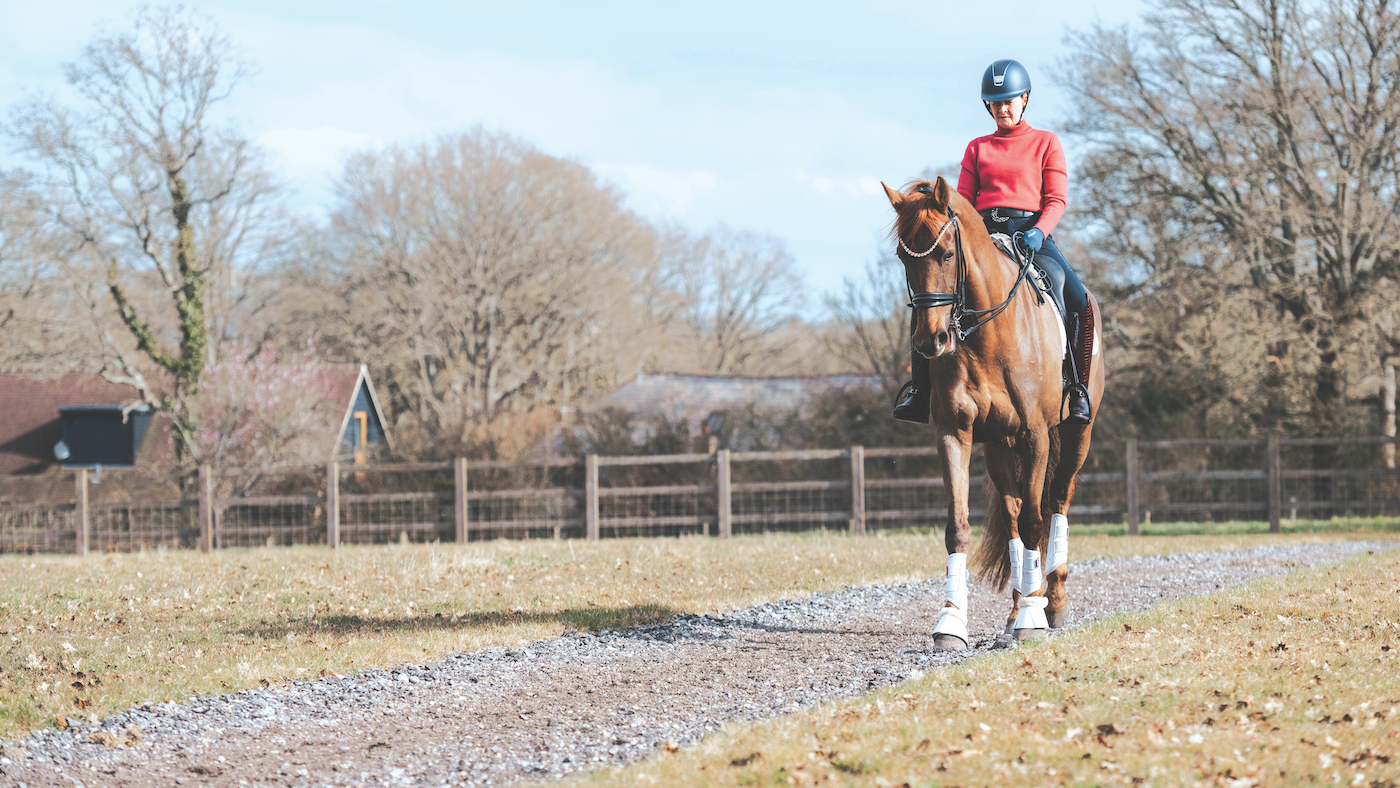
Nicola Naylor rides Moulin Rouge VIII around the field, feeling when she’s off the track by the changing surface underfoot. Credit: Tilly Berendt Media
Sarah has learned from Nicola, as well as the other way round; methods that have worked for her also help other horses and riders.
“She’s extremely determined; someone who says, ‘That’s what I want to do,’ and goes and does it,” she says. “She’s a very talented rider, she never complains or makes excuses. She’s very supportive of other riders, and takes extremely good care of her horses.
“I had a little tear, when she did her grand prix. She’d actually gone and done it. I was very proud.”
- To read more exclusive interviews with successful riders across the disciplines, subscribe to the Horse & Hound website
You may also enjoy reading…
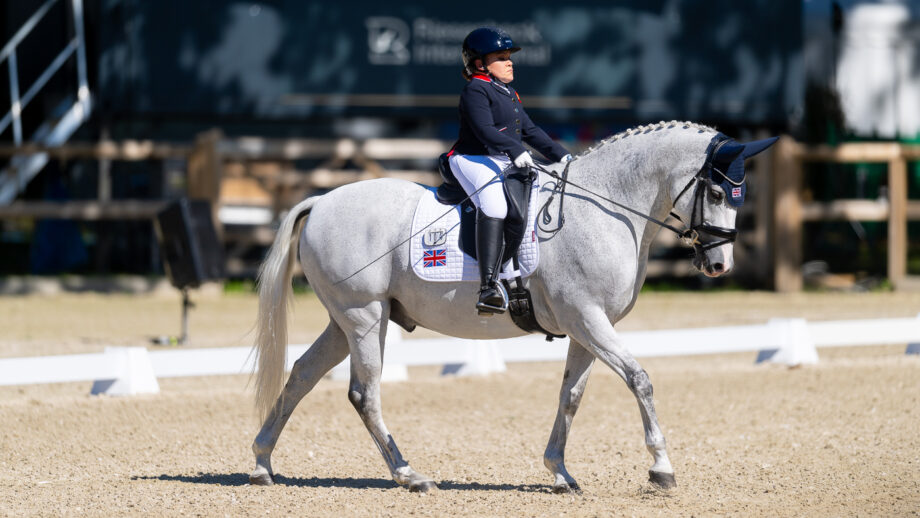
New names and medallists carry Britain’s hopes at European Para Dressage Championships

Could changing how you hold the reins improve your contact? Become a more independent rider with Charlie Hutton’s rein-handling techniques

‘I’ve had my fair share of ups and downs’: Becky Moody on riders’ mental health, social media and dealing with adversity

‘The more time you “waste”, the better your relationship’: how less is more for Olympic ‘mare of all mares’
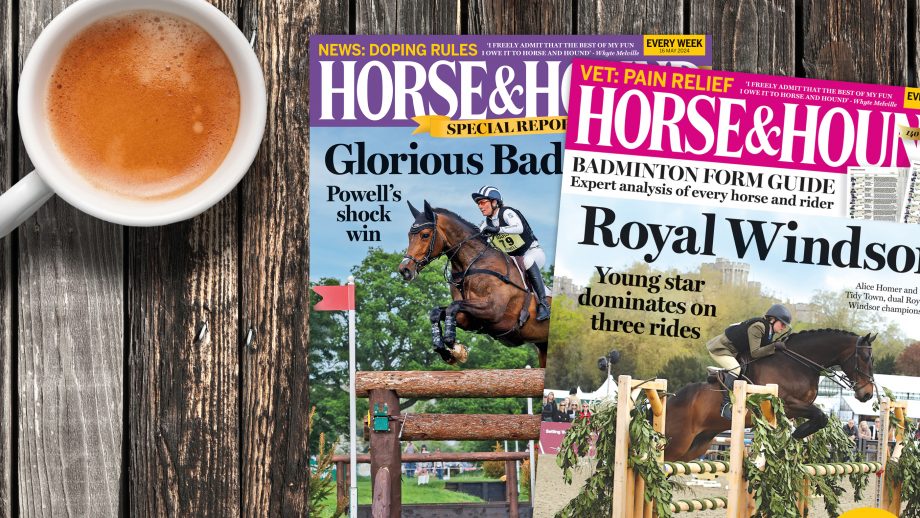
Subscribe to Horse & Hound magazine today – and enjoy unlimited website access all year round

